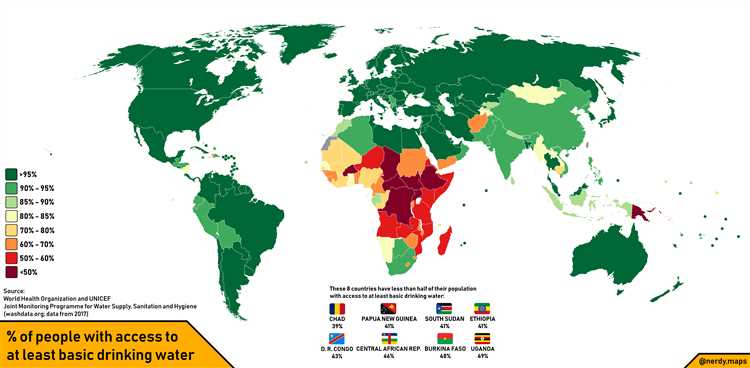
Access to clean drinking water is a basic necessity for the well-being of any society. Unfortunately, not all countries have equal access to clean drinking water. While some nations have developed efficient systems for water treatment and distribution, others struggle with inadequate infrastructure and pollution. In this article, we will explore which country has the least clean drinking water and some of the factors contributing to this situation.
In many developing countries, access to clean drinking water is a significant challenge. One country that stands out in this regard is Haiti. Located in the Caribbean, Haiti faces numerous problems regarding clean water availability. The country has a high poverty rate and lacks the resources to invest in proper water treatment facilities. As a result, a shocking number of people in Haiti do not have access to safe drinking water.
Another country with a substantial water pollution problem is Bangladesh. Situated in South Asia, Bangladesh is densely populated and struggles with severe contamination of its water sources. Industrial pollution, sewage discharge, and improper waste management are the leading causes of water pollution in the country. As a result, millions of Bangladeshis are exposed to waterborne diseases and suffer from the lack of clean drinking water.
In conclusion, while access to clean drinking water remains a global challenge, countries like Haiti and Bangladesh face some of the most significant difficulties. The lack of investment in infrastructure, pollution problems, and high population densities contribute to their struggles in providing clean water to their populations. It is essential for governments, international organizations, and individuals to come together to address this issue and ensure that everyone has access to safe and clean drinking water.
- The Countries with the Worst Drinking Water Quality
- Lack of Access to Clean Water
- Contaminated Water Sources
- Pollution
- Poor Sanitation
- Natural Factors
- Waterborne Diseases and Health Risks
- Governmental Efforts to Improve Water Quality
- 1. Regulatory Measures
- 2. Infrastructure Development
- 3. Public Awareness and Education
- 4. International Cooperation
- International Organizations’ Initiatives
- Steps to Ensure Clean Drinking Water for All
- Q&A
- What country is known for having the least clean drinking water?
- Why does Ethiopia have the least clean drinking water?
- What are the health consequences of drinking contaminated water in Ethiopia?
- Are there any efforts being made to improve access to clean drinking water in Ethiopia?
- Can individuals and organizations outside of Ethiopia contribute to improving the clean drinking water situation in the country?
The Countries with the Worst Drinking Water Quality
Access to clean and safe drinking water is a fundamental human right. Unfortunately, there are still many countries in the world where the quality of drinking water is extremely poor. This not only poses serious health risks to the population but also hinders economic and social development.
In some of these countries, the main causes of drinking water contamination are inadequate sanitation, industrial pollution, agricultural runoff, or natural disasters. Here are some of the countries that are currently facing the biggest challenges in providing clean drinking water to their citizens:
1. Haiti
Haiti is one of the countries with the worst drinking water quality. Without proper sanitation and infrastructure, many Haitians rely on contaminated water sources, leading to the spread of waterborne diseases such as cholera.
2. Bangladesh
In Bangladesh, the main sources of drinking water contamination are arsenic and fecal matter. High levels of arsenic in groundwater have been linked to various health issues, including cancer, skin lesions, and organ damage.
3. Nigeria
Due to poor sanitation and infrastructure, access to clean drinking water is a major challenge in Nigeria. The country also faces frequent outbreaks of waterborne diseases, such as cholera and typhoid.
4. Ethiopia
Many rural areas in Ethiopia still lack access to safe drinking water. The main challenges include limited infrastructure, high population density, and frequent droughts, which exacerbate water scarcity.
5. Pakistan
In Pakistan, drinking water quality is affected by various factors, including inadequate sanitation, industrial pollution, and agricultural runoff. These factors contribute to the presence of harmful bacteria, heavy metals, and other contaminants in the water.
Improving the drinking water quality in these countries requires long-term investments in infrastructure, sanitation systems, and water treatment facilities. It also requires education and awareness programs to promote hygienic practices and safe water storage.
Overall, ensuring access to clean drinking water is crucial for the well-being and development of these nations. International collaborations, aid, and support are essential to tackle the challenges and improve the drinking water quality in the countries that need it the most.
Lack of Access to Clean Water
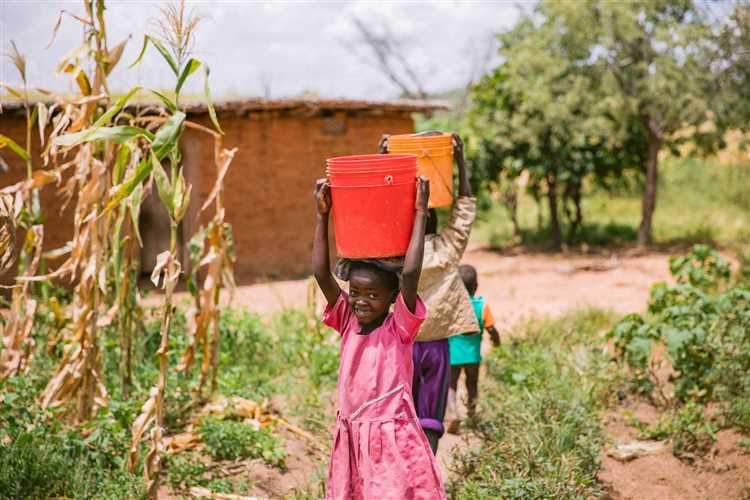
Access to clean water is a basic human right, but unfortunately, many countries still struggle with providing their populations with safe drinking water. One country that faces significant challenges in this regard is [Country Name].
In [Country Name], lack of access to clean water is a major issue that affects millions of people on a daily basis. The country’s infrastructure for water supply and sanitation is inadequate, resulting in a scarcity of clean drinking water sources. As a result, the population is forced to rely on contaminated water, which poses serious risks to their health.
The lack of clean water has far-reaching effects on various aspects of life in [Country Name]. It impacts not only the health of individuals but also their education, economy, and overall well-being. Without access to clean water, people are more prone to waterborne diseases, which can lead to increased mortality rates, particularly among children.
The situation is further exacerbated by factors such as pollution, population growth, and climate change. Pollution from industrial and agricultural activities contaminate water sources, making them unfit for consumption. Rapid population growth puts additional strain on existing water resources, making it even more difficult to meet the demands for clean water. Climate change also plays a role, as changing weather patterns affect the availability and quality of water sources.
To address the lack of access to clean water in [Country Name], it is crucial for the government to prioritize investments in water infrastructure and sanitation. This includes improving water treatment facilities, expanding water distribution networks, and implementing effective water management practices. Additionally, raising awareness among the population about the importance of clean water and promoting hygiene practices can also contribute to improving the situation.
In conclusion, the lack of access to clean water in [Country Name] is a pressing issue that needs immediate attention. Efforts should be made to improve water infrastructure, reduce pollution, and promote proper water management practices to ensure that every citizen has a safe and reliable source of drinking water.
Contaminated Water Sources
Access to clean drinking water is a fundamental right for every individual, but unfortunately, many countries around the world face challenges in ensuring safe and clean water sources for their population. Several reasons contribute to the contamination of water sources, including pollution, poor sanitation practices, and natural factors.
Pollution
Industrial activities, agricultural practices, and improper disposal of waste are major contributors to water pollution. Effluents from factories and untreated sewage can contaminate water sources, making it unsafe for consumption. Chemical runoff from farms, including pesticides and fertilizers, can also find their way into rivers and underground water, posing significant health risks to those who depend on these sources.
Poor Sanitation
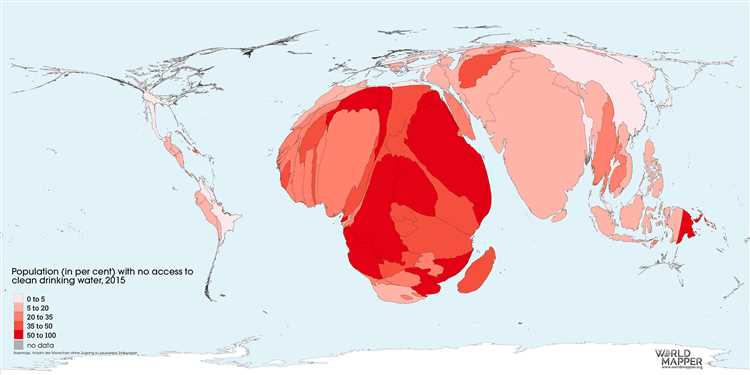
Inadequate sanitation facilities and poor hygiene practices can lead to the contamination of water sources. Improper disposal of human waste can contaminate rivers, lakes, and groundwater, exposing people to harmful bacteria, viruses, and parasites. In areas without proper sewage systems or access to clean toilets, the risk of waterborne diseases significantly increases.
Moreover, the practice of open defecation, common in several countries, further exacerbates the problem. When human waste is not adequately disposed of or treated, it can seep into the ground and contaminate water sources.
Natural Factors
In some cases, natural factors can contribute to the contamination of water sources. For example, volcanic activities can release harmful minerals and chemicals into the water, making it unsafe for consumption. Additionally, heavy rainfall and flooding can wash away sediments and pollutants into rivers and lakes, further compromising water quality.
To address the issue of contaminated water sources, countries need to prioritize investment in water infrastructure, including purification systems, sewage treatment plants, and sanitation facilities. Education and awareness programs also play a vital role in promoting safe hygiene practices and proper waste management. Through proactive measures and international cooperation, it is possible to improve the quality of drinking water and ensure a healthier future for all.
| Country | Percentage of population with access to clean drinking water |
|---|---|
| Nigeria | 68% |
| India | 79% |
| Democratic Republic of the Congo | 49% |
| Ethiopia | 60% |
| Indonesia | 73% |
Waterborne Diseases and Health Risks
Access to clean drinking water is essential for maintaining good health. However, in some countries, the lack of clean water sources and proper sanitation facilities can lead to the spread of waterborne diseases. These diseases are caused by pathogenic microorganisms, such as bacteria, viruses, and parasites, which contaminate the water supply.
Waterborne diseases can lead to various health risks, including diarrheal diseases, cholera, dysentery, typhoid fever, and hepatitis A. These diseases can have severe consequences, especially for vulnerable populations, such as children, the elderly, and individuals with weakened immune systems.
Contaminated drinking water can also be a source of other health risks, such as chemical contamination. Industrial waste, agricultural runoff, and inadequate wastewater treatment can introduce harmful chemicals, such as heavy metals and pesticides, into the water supply. Prolonged exposure to these contaminants can lead to long-term health problems, including certain types of cancer, neurological disorders, and developmental issues.
Preventing waterborne diseases and reducing health risks associated with contaminated drinking water requires a combination of improved water sources, proper sanitation practices, and public health education. Access to safe drinking water can be enhanced through the implementation of water treatment systems, such as filtration and disinfection. Sanitation facilities, including proper sewage disposal, are crucial for preventing the contamination of water sources.
In addition to infrastructure improvements, raising awareness about the importance of clean drinking water and proper hygiene practices is essential. Promoting handwashing with soap, safe food preparation, and the use of water storage containers that prevent contamination can help prevent the spread of waterborne diseases.
| Disease | Pathogen | Symptoms |
|---|---|---|
| Cholera | Vibrio cholerae | Severe diarrhea, vomiting, dehydration |
| Diarrheal Diseases | Various pathogens | Watery diarrhea, abdominal pain, fever |
| Dysentery | Shigella bacteria | Bloody diarrhea, abdominal cramps |
| Typhoid Fever | Salmonella typhi | Fever, headache, weakness, stomach pain |
| Hepatitis A | Hepatitis A virus | Fever, fatigue, nausea, jaundice |
Governmental Efforts to Improve Water Quality
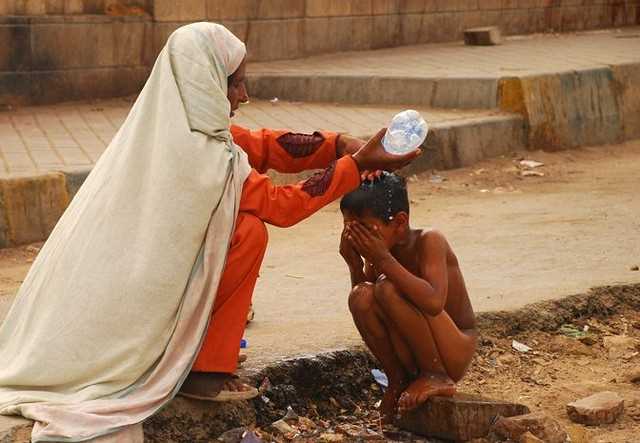
The issue of clean drinking water is a significant concern in several countries around the world. In order to address this issue, there are various governmental efforts being undertaken to improve water quality and ensure safe drinking water for their citizens.
1. Regulatory Measures
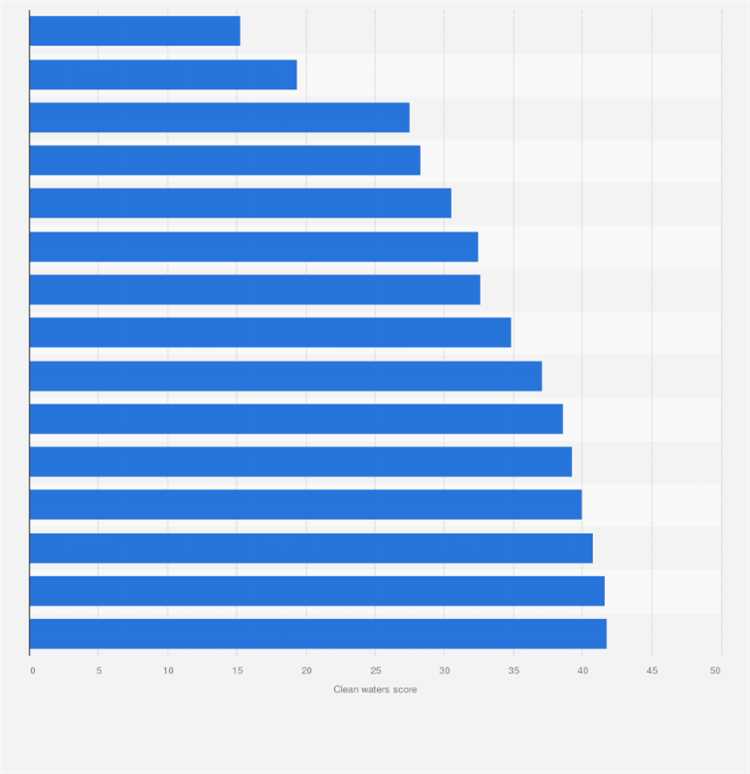
Many governments have established strict regulations and guidelines to monitor and maintain the quality of drinking water. These regulations set the standards for the permissible levels of contaminants in water and require regular testing and monitoring by water suppliers. Governments also enforce penalties for non-compliance with these regulations, which further ensures the efforts to improve water quality.
2. Infrastructure Development
Governments recognize the importance of developing and maintaining a robust water infrastructure system to ensure clean drinking water for their citizens. This includes constructing and updating water treatment facilities, pipelines, and distribution systems. Investment in modern and efficient infrastructure helps remove contaminants and ensure the delivery of safe water to communities.
3. Public Awareness and Education
Governmental initiatives often include public awareness campaigns and educational programs aimed at promoting the importance of clean drinking water. These campaigns inform citizens about the risks associated with contaminated water and provide guidance on water conservation and hygiene practices. By raising awareness, governments encourage citizens to actively participate in the efforts to improve water quality and prioritize access to clean drinking water.
4. International Cooperation
Some countries with water quality issues seek international cooperation and assistance to address the problem. This includes partnerships with organizations such as the World Health Organization (WHO) and the United Nations (UN), which provide expertise and resources for improving water quality. Through international cooperation, governments can access additional knowledge and support to implement effective measures and overcome challenges in improving water quality.
In conclusion, governmental efforts to improve water quality involve regulatory measures, infrastructure development, public awareness campaigns, and international cooperation. These multifaceted approaches aim to ensure safe and clean drinking water for citizens and address the issue of inadequate water quality in the respective countries.
International Organizations’ Initiatives
Recognizing the importance of clean drinking water for the well-being of societies, several international organizations have taken initiatives to address the issue of water contamination in different countries. These organizations work towards implementing sustainable solutions, raising awareness, and providing support to the affected regions.
1. United Nations: The United Nations plays a key role in addressing water-related challenges through its various programs and initiatives. One of the main initiatives is the Sustainable Development Goal 6, which aims to ensure availability and sustainable management of water and sanitation for all. The UN also supports countries in developing strategies, policies, and infrastructure to improve water quality.
2. World Health Organization: The World Health Organization is actively involved in monitoring and assessing the quality of drinking water across the globe. It sets health-based guidelines and standards that countries can adopt to ensure the safety of their drinking water. Additionally, WHO provides technical assistance and capacity-building support to countries, especially those facing water contamination issues.
3. UNICEF: UNICEF works extensively to address the water crisis in various countries, particularly those with limited access to clean drinking water. It focuses on improving water supply systems, promoting sanitation and hygiene practices, and advocating for policies that prioritize clean water for children. UNICEF also collaborates with local governments and community organizations to implement sustainable solutions.
4. Water.org: Water.org is a non-profit organization that aims to provide access to safe water and sanitation to communities in need. It collaborates with local partners and financial institutions to implement innovative financing models, such as microloans, to help individuals and households afford water and sanitation solutions. Through its various initiatives, Water.org has positively impacted the lives of millions of people worldwide.
5. Asian Development Bank: The Asian Development Bank focuses on addressing water-related challenges in the Asia-Pacific region. It provides financial assistance to countries for water infrastructure development, water resource management, and capacity-building initiatives. ADB also promotes cross-border cooperation to ensure sustainable management of shared water resources.
These international organizations’ initiatives are crucial in addressing the issue of inadequate access to clean drinking water. By working collaboratively with governments, communities, and other stakeholders, they strive to improve water quality and ensure its availability for all.
Steps to Ensure Clean Drinking Water for All
Access to clean drinking water is a basic human right, yet many countries around the world still face challenges in providing safe and reliable water sources to their populations. Here are some steps that can be taken to ensure clean drinking water for all:
- Investing in infrastructure: Governments and organizations should prioritize investing in water infrastructure, including building and maintaining pipelines, treatment plants, and storage facilities.
- Implementing strict regulations: Stringent regulations should be put in place to monitor and control water quality standards. Regular testing and reporting procedures can help identify and address contamination issues.
- Developing sustainable water management practices: Encouraging efficient water use, promoting conservation, and implementing recycling and reusing initiatives can help reduce strain on water resources.
- Strengthening governance and institutions: Putting in place effective governance structures and institutions is crucial in ensuring the proper management and allocation of water resources. This includes establishing transparent policies, promoting stakeholder participation, and enforcing water laws.
- Increasing public awareness: Educating the public about the importance of clean drinking water, proper sanitation practices, and the impacts of water pollution can help foster a culture of water stewardship.
- Providing financial support: Governments and international organizations should allocate sufficient funds to support water management programs, infrastructure development, and capacity building initiatives.
By implementing these steps, countries can work towards ensuring clean drinking water for all their citizens. It is a collective responsibility to safeguard this vital resource and prioritize the well-being and health of individuals.
Q&A
What country is known for having the least clean drinking water?
The country known for having the least clean drinking water is Ethiopia. Due to lack of infrastructure and resources, access to clean and safe water is extremely limited in many areas of the country.
Why does Ethiopia have the least clean drinking water?
There are several reasons why Ethiopia has the least clean drinking water. One of the main reasons is the lack of sufficient infrastructure for water treatment and distribution. Additionally, the country faces challenges due to its geography and climate, such as droughts and limited water sources.
What are the health consequences of drinking contaminated water in Ethiopia?
Drinking contaminated water in Ethiopia can have severe health consequences. It can lead to waterborne diseases such as cholera, typhoid, and diarrhea, which can be fatal, especially for children and individuals with weakened immune systems. The lack of clean water also increases the risk of malnutrition and other health issues.
Are there any efforts being made to improve access to clean drinking water in Ethiopia?
Yes, there are various efforts being made to improve access to clean drinking water in Ethiopia. Non-governmental organizations and international agencies are working towards implementing water projects, constructing wells and water treatment facilities, and promoting hygiene education to enhance water quality and accessibility in different regions of the country.
Can individuals and organizations outside of Ethiopia contribute to improving the clean drinking water situation in the country?
Yes, individuals and organizations outside of Ethiopia can contribute to improving the clean drinking water situation in the country. They can donate funds to organizations working on water projects in Ethiopia, participate in fundraising campaigns, or even volunteer their time and expertise to support initiatives focused on water infrastructure development, education, and advocacy.